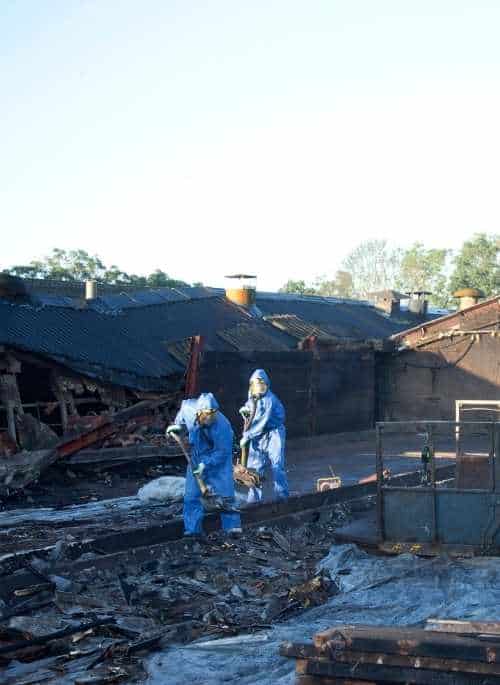Industrial Accident Cleanup in Los Angeles County and Orange County
Californians' First Choice in Industrial Accident Cleanup - Get Immediate, Honest, Professional Service with Bioclean Socal

Your Trusted Industrial Accident Cleanup in Los Angeles Metro
BIOClean SoCal - Los Angeles County and Orange County's 24/7 Professional Industrial Accident Cleanup Company
Industrial accident cleanup is an essential duty that must be taken seriously if your business remains in operation. In the event of an industrial accident, there may be chemicals and debris that must be cleaned up to avoid causing further damage or health hazards. Proper industrial accident cleanup can help to mitigate any potential legal issues and can also help to restore public confidence in your company.
At BIOClean SoCal, we understand the importance of industrial accident cleanup. We are prepared to assist your business in ensuring that the cleanup process is carried out safely and promptly. We have years of experience in this field and are equipped to handle all aspects of the cleanup process, from site assessment to cleanup management. Contact us today to learn more about our services.
What Is Industrial Accident Cleanup?
Types Of Industrial Accident Cleanup
Areas We Serve - Industrial Accident Cleanup Service
The Process Of Industrial Accident Cleanup
Industrial accidents are costly and often prevent businesses from functioning smoothly. When these accidents occur, it is essential to know the process of industrial accident cleanup to minimize the adverse effects on the business.
The first step in cleaning up an industrial accident is to identify the scene of the accident. This can be done using mapping software or physically walking through the area. Once the scene has been identified, a team of professionals must be assembled to clean up the site properly.
The cleanup process typically begins by removing debris that may have been left behind by accident. This may include pieces of metal, plastics, and other materials. Once the debris has been removed, firefighters must be called in to put out any remaining fires. Afterward, crews must sanitize the area to prevent further contamination.
Once the area has been cleaned and sanitized, workers must begin restoring normal operations as quickly as possible. This may involve reopening closed businesses, arranging for new supplies, and rebuilding damaged equipment. In some cases, it may also be necessary to replace damaged property.
While industrial accident cleanup can be complex and time-consuming, it is essential for businesses affected by accidents to have a team of professionals on hand to help them restore normal operations as quickly as possible.



